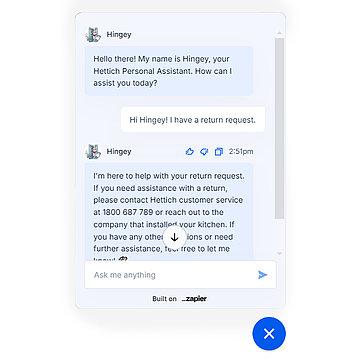San Diego County has been awarded $19.6 million in federal funding aimed at enhancing services for the growing migrant population in the region. The influx of resources arrives amid increasing demand for housing, healthcare, and legal assistance for migrants arriving at the southern border. County officials now face the critical task of determining how to allocate the funds effectively to address immediate needs while planning for long-term support. This development highlights the ongoing challenges and opportunities in managing migration impacts along the U.S.-Mexico border.
San Diego County Receives Significant Federal Aid to Support Migrant Services
San Diego County has been awarded a substantial $19.6 million in federal funding aimed at bolstering services for the growing migrant population in the region. County officials now face the critical task of determining the most impactful allocation of these funds, balancing immediate humanitarian needs with long-term support initiatives. Key areas under consideration include expanding shelter capacities, enhancing legal aid programs, and improving access to healthcare and education for migrants.
The funding presents an opportunity to address several pressing concerns faced by the community. Among the potential uses being discussed are:
- Emergency housing expansions to alleviate overcrowding at border facilities
- Comprehensive medical services tailored to the unique health challenges of migrants
- Language and legal counseling to navigate immigration processes effectively
- Educational support programs for migrant children and families
| Service Area | Potential Investment | Expected Impact |
|---|---|---|
| Emergency Housing | $7 million | Increased shelter capacity by 30% |
| Medical Services | $4.5 million | Expanded healthcare access for 5,000+ migrants |
| Legal Aid | $3 million | Assistance with immigration cases and documentation |
| Educational Programs | $5.1 million | Support for migrant children’s schooling and language learning |
Key Challenges Facing County Officials in Allocating the Federal Funding
County officials face a complex balancing act in determining the most impactful use of the $19.6 million federal allocation for migrant services. Prioritizing between emergency housing, healthcare access, educational programs, and legal assistance requires a data-driven approach, yet the county grapples with rapidly changing migrant demographics and fluctuating arrival rates. The need to ensure transparency and accountability while meeting immediate humanitarian needs amplifies the challenge. Moreover, coordination with nonprofit organizations and state agencies is crucial but often hindered by varying policy objectives and limited communication channels.
Officials must also contend with logistical constraints, such as limited shelter capacity and staffing shortages, which could delay program rollouts despite available funds. Budget allocation decisions are further complicated by community concerns about resource distribution and long-term sustainability. The following outlines some primary challenges the county needs to address:
- Rapid Demographic Shifts: Adapt funding to changing migrant profiles and needs
- Coordination Hurdles: Streamline partnerships with nonprofits and government entities
- Operational Capacity: Address shortages in shelter space and qualified personnel
- Transparency & Oversight: Implement mechanisms to track and report fund usage effectively
- Community Engagement: Balance migrant aid with local resident concerns
| Challenge | Impact | Potential Solution |
|---|---|---|
| Demographic Uncertainty | Misaligned services | Real-time data monitoring |
| Interagency Coordination | Duplication of efforts | Centralized communication hub |
| Resource Limitations | Delayed implementation | Public-private partnerships |
| Community Pushback | Funding reallocation risks | Robust public outreach |
Strategic Priorities for Enhancing Shelter, Healthcare, and Legal Assistance
The allocation of the $19.6 million federal funding presents a critical opportunity for San Diego County to significantly improve support systems for migrants arriving in the region. Prioritizing shelter capacity expansion is essential, with an emphasis on creating safe, temporary housing that can accommodate fluctuating migrant populations. This includes investing in modular housing units and upgrading existing facilities to meet health and safety codes. Additionally, incorporating rapid-response teams to manage intake and placement will streamline service delivery and reduce bottlenecks during peak migration periods.
Healthcare and legal assistance must be integral components of the spending strategy. Expanding healthcare services requires enhancing access to critical medical and mental health care tailored to migrants’ unique needs, including culturally competent care and language support. Legal assistance funding should focus on providing more immigration experts and interpreters to facilitate quicker processing of asylum claims and legal documentation. A strategic plan could look like this:
| Priority Area | Key Actions | Expected Impact |
|---|---|---|
| Shelter |
|
Increased capacity & faster accommodation |
| Healthcare |
|
Improved health outcomes & access |
| Legal Assistance |
|
Faster legal resolutions & reduced backlog |
Community Stakeholders Urge Transparent and Inclusive Spending Decisions
Local advocates, nonprofit leaders, and community members have come together to call for a transparent and participatory approach in allocating the newly awarded $19.6 million federal funds designated for migrant services. They argue that spending decisions must reflect the diverse needs of migrant populations and avoid the pitfalls of top-down budgeting. Such involvement ensures that critical areas like housing support, legal aid, healthcare access, and workforce integration receive equitable attention. Stakeholder forums and public input sessions are being encouraged to foster accountability and build public trust.
Organizers have outlined key priorities to guide spending strategies, emphasizing flexibility and cultural competence in program design. Among these priorities are:
- Enhanced language services to bridge communication gaps
- Safe shelter options prioritizing family reunification and youth
- Collaborative partnerships with grassroots organizations for outreach
- Data transparency with regular updates on fund utilization
| Spending Focus Area | Community Input Priority |
|---|---|
| Legal Support | High |
| Healthcare Access | Medium |
| Housing Services | High |
| Workforce Programs | Medium |
Concluding Remarks
As San Diego County prepares to allocate the newly secured $19.6 million in federal funding for migrant services, local officials face the critical task of determining how to best deploy these resources to address the immediate needs of migrants while supporting long-term integration efforts. The coming weeks will be pivotal as stakeholders collaborate to ensure the funds translate into effective programs and services amid ongoing migration challenges in the region.







